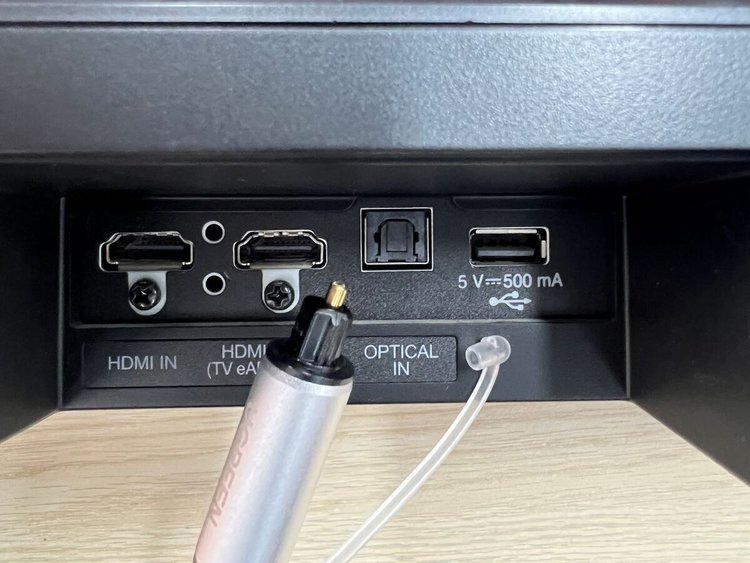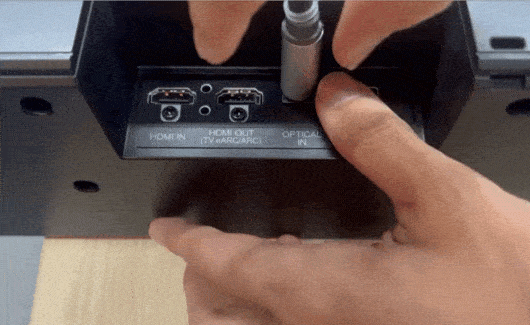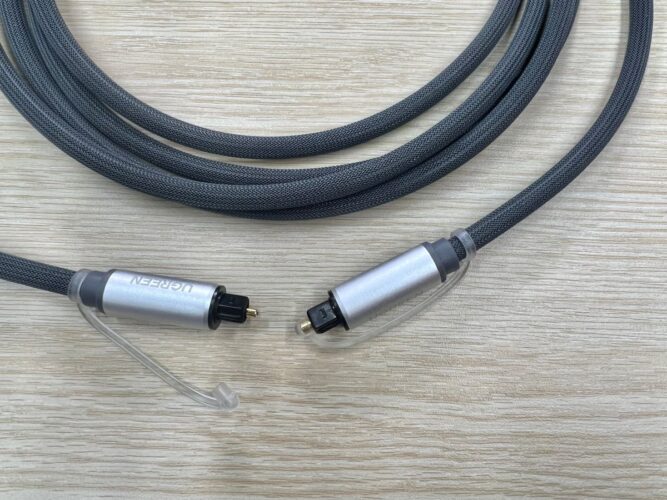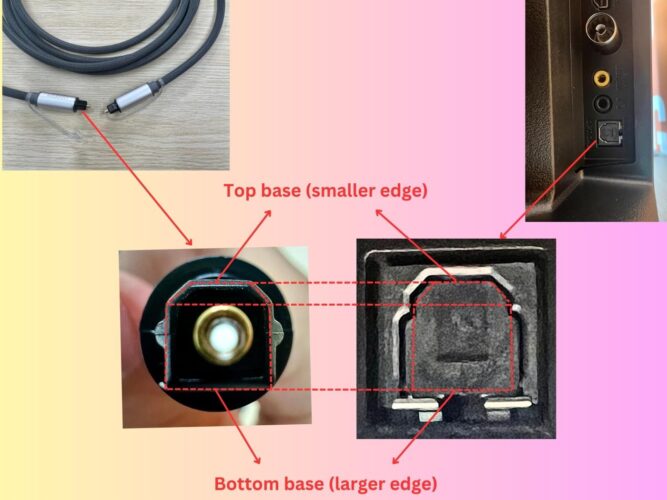(Safely) How to Unplug Optical Cable from Your TV

What To Know
- To properly remove the optical cable: Locate the port > Stabilize the device > Gently grasp & pull the plug (not the cable) straight out > Do the same with the other end > Cover both connectors with plastic tips.
- To remove the plastic tip: Gently twist and pull off the protective plastic tip from the optical cable’s connector using your fingers or pliers.
- Properly insert the optical cable by aligning the plug’s bump with the top of the port, pushing it in until it clicks, and testing the audio connection.
Having trouble disconnecting the optical cable from your TV or soundbar without causing harm?
Our easy-to-follow guide demystifies the process of safely removing and managing optical cables.
Through clear, step-by-step instructions, we also address common challenges such as removing tight plastic tips or avoiding connector damage.
Quick Navigation
How To Properly Remove the Optical Cable
Optical cables come in different qualities; some are fragile, while others have high-quality sheathing. Regardless of the type you have, unplug your optical cable carefully to preserve its lifespan.

Below are steps to unplug your optical cable safely.
Step 1: Locate the optical port and cable on your TV/Soundbar.
Step 2: Firmly hold the device with one hand (near the optical port) to create support.
Step 3: Use your thumb and index finger on the other hand to gently grasp the cable’s plug on opposite sides, and pull it straight out.
Step 4: Unplug the other end of the cable from the connected device.
Step 5: Cover both ends with the plastic tips.
Step 6: Coil the cable and store it properly to prevent damage.
Note: If the connector plug is difficult to detach from the port, wiggle it gently from side to side as you pull. Don’t twist or pull the cable out at an angle.
How To Remove the Plastic Tip

New optical cables come with a protective cover on their connector(plug). The cover is plastic and fits right over the tip of the plug.
You must first remove the plastic tip before you can use the connector. However, there’s a technique to it—to ensure you don’t damage the connectors or the plastic tip.
Follow the steps below.
Step 1: Locate the plastic tip at the ends of the optical cable.
Step 2: Grip the plastic tip with your thumb and index finger (or a pair of tweezers or needle-nose pliers). Ensure the grip isn’t tight enough to damage the cover.
Step 3: Gently twist and pull the plastic tip straight off the connector.
Note: You’re advised to not damage the plastic covers because they’re reusable and vital for storage.
How To Properly Plug the Optical Cable
Ready to plug in your optical audio cable? It’s simple once you’re familiar with the process.
The connector port is usually labeled ‘Optical Audio,’ ‘TOSLINK,’ ‘Digital Audio Out,’ or ‘SPDIF.’ However, its distinctive appearance means you won’t need a label to find it.
The Optical Audio connector is rectangular, but a small bump on one side marks the top of the connector. Follow the steps below to plug in your optical cable properly.

Step 1: Locate the Optical port on your TV or Soundbar. If there’s any confusion, consult your device’s user manual.
Step 2: Gently grasp and remove the protective cap.
Step 3: Hold the cable with its plug facing upwards so that it aligns with the top of the connector port.
Step 4: Carefully insert the cable into the optical port on your device. Keep it straight and don’t force it in.
Step 5: After inserting the connector, you should feel a slight click when it snaps into place. If you don’t feel this click, gently wiggle the connector to ensure it’s properly seated.
Step 6: Test your audio devices to ensure the connection works properly.
What Will Happen If You Don’t Remove Your Optical Cable Properly?
While optical cables and connectors are built to be durable, they are still susceptible to damage. Unplugging and storing them properly is how you avoid potential issues.
Below are two major risks that poor usage poses to your optical cable:
1. Damage to the connector
If you unplug your optical cable forcefully or pull it out at an angle, you can break the cable or cause the connector plug to no longer fit well with the port. As a result, you’ll experience a poor error-ridden connection or a complete loss of signal.
2. Dust accumulation
Many people unplug their optical audio cables and then forget to replace the plastic tip before storage. Unfortunately, leaving the connector plugs uncovered will allow dust and debris to accumulate over time, resulting in weakened or distorted signals.
Tips for Maintaining Your Optical Audio Cable/Connector
- Use a soft, dry cloth to clean the connectors from time to time, especially in dusty or humid environments.
- Don’t expose your optical cables to extreme temperatures or moisture, as it can damage the cables and affect their performance.
- Don’t bend and twist the cables to slow wear and tear.
- When you coil the cable for storage, keep the coils loose. Small, tight coils can cause the cable to break.
- Replace faulty cables as soon as you discover them. Trying to manage or manipulate them into working can damage the port.
Note: Unlike most transmission cables, optical cables use light and not electricity. This means that you’re not at risk for fire or electrocution if the optical cable breaks.
Gabriella ‘Diogo is a technical writer with a vested interest in tech hardware and equipment. She shares her knowledge and processes in an easy-to-grasp, lighthearted style. When she’s not testing or researching device performance, you’ll find her writing short stories or rewatching episodes of her favorite sitcoms.


